The #1 Online Plant Database
Plant Height: 3 feet
Flower Height: 5 feet
Spacing: 4 feet
Sunlight:
![]()
![]()
Hardiness Zone: 5
Description:
Resembling leaves of a horse-chestnut, this Chinese native requires a large area to grow and display its huge plumes of creamy-white flowers that tower above the large leaves; even one is an ideal specimen in the garden
Ornamental Features
Chestnut Rodgersia features bold plumes of lightly-scented creamy white flowers rising above the foliage from late spring to early summer. The flowers are excellent for cutting. Its attractive large serrated oval palmate leaves emerge brown in spring, turning light green in colour. As an added bonus, the foliage turns a gorgeous coppery-bronze in the fall.
Landscape Attributes
Chestnut Rodgersia is an herbaceous perennial with a rigidly upright and towering form. Its wonderfully bold, coarse texture can be very effective in a balanced garden composition.
This is a relatively low maintenance plant, and should be cut back in late fall in preparation for winter. Deer don't particularly care for this plant and will usually leave it alone in favor of tastier treats. It has no significant negative characteristics.
Chestnut Rodgersia is recommended for the following landscape applications;
- Mass Planting
- General Garden Use
- Groundcover
- Bog Gardens
Planting & Growing
Chestnut Rodgersia will grow to be about 3 feet tall at maturity extending to 5 feet tall with the flowers, with a spread of 5 feet. When grown in masses or used as a bedding plant, individual plants should be spaced approximately 4 feet apart. It grows at a slow rate, and under ideal conditions can be expected to live for approximately 10 years. As an herbaceous perennial, this plant will usually die back to the crown each winter, and will regrow from the base each spring. Be careful not to disturb the crown in late winter when it may not be readily seen!
This plant does best in partial shade to shade. It prefers to grow in moist to wet soil, and will even tolerate some standing water. It is not particular as to soil pH, but grows best in rich soils. It is somewhat tolerant of urban pollution. Consider applying a thick mulch around the root zone over the growing season to conserve soil moisture. This species is not originally from North America. It can be propagated by division.
This plant is not reliably hardy in our region, and certain restrictions may apply; contact the store for more information.





